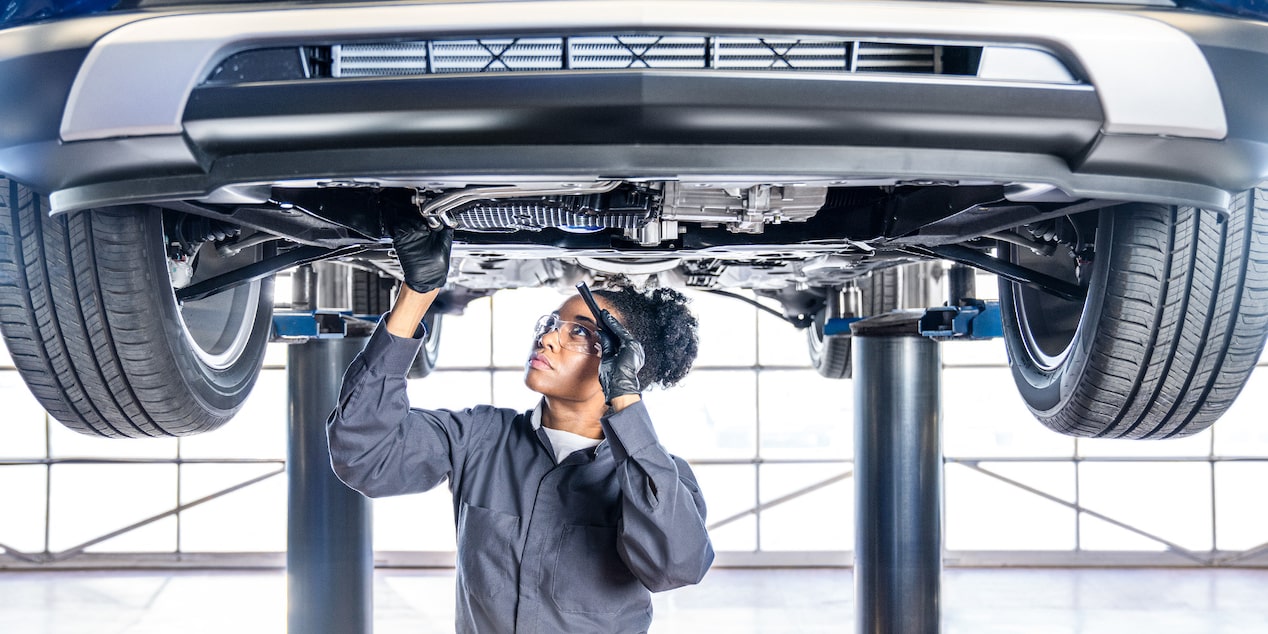All Categories
Featured
Tire rotations are one of the most basic yet most effective upkeep tasks to guarantee your lorry runs efficiently and securely. This routine solution rearranges tire wear, offering countless advantages for your vehicle's performance, security, and your pocketbook.
What Does Tire Turning Involve?
Tire rotation is the procedure of periodically transforming the setting of each tire on your lorry. Front tires may be switched with rear ones, or tires might be moved diagonally. The particular pattern depends upon elements like your car's drivetrain (front-wheel, rear-wheel, or all-wheel drive) and the kind of tires you have.
![]()
Why Tire Rotations Are Important
Promotes Even Step Use. Different tires birth different amounts of weight and anxiety depending upon their position. Front tires often use much faster because they deal with guiding and braking. Routine turnings balance out the wear, guaranteeing all 4 tires have similar step depths.
Extends Tire Life-span. Uneven wear results in early tire replacements. Rotating your tires can extend their life-span, conserving you money over time.
Improves Lorry Efficiency. Balanced tires boost stability, managing, and grip. Whether you're cornering, braking, or driving on unsafe roads, equally used tires make certain a smoother and more secure driving experience.
![]()
Boosts Gas Effectiveness. Tires with unequal step wear can produce a lot more moving resistance, that makes your engine job harder and eats more gas. Routine turnings help preserve optimal fuel efficiency.
Guarantees Safety. Used tires can endanger braking distance and control. By revolving your tires, you maintain even put on and reduce the danger of blowouts or skidding.
How Frequently Should You Rotate Your Tires?
Specialists advise revolving your tires every 5,000 to 7,500 miles. A convenient approach is to combine tire turnings with oil adjustments. Constantly consult your automobile's proprietor guidebook for specific standards.
Common Turning Patterns
Rotation patterns depend on your vehicle's drivetrain and tire type:
Front-Wheel Drive (FWD): Front tires relocate to the rear, and rear tires cross to the front.
Rear-Wheel Drive (RWD): Back tires relocate to the front, and front tires cross to the rear.
All-Wheel Drive (AWD): Tires comply with an "X" pattern to make certain balanced wear.
Directional Tires: These tires should remain on the exact same side of the automobile and are swapped front to back.
Indications Your Tires Required Turning
Irregular step wear.
![]()
Decreased gas performance.
Vibrations while driving, specifically at broadband.
Problem managing the lorry in unfavorable weather problems.
Final Thoughts
Tire rotations are a simple means to safeguard your financial investment and improve your driving experience. By redistributing wear, you can prolong the life of your tires, improve gas effectiveness, and guarantee your safety and security when driving. Set up normal tire turnings with a relied on technician and make it a consistent component of your car's maintenance routine.
What Does Tire Turning Involve?
Tire rotation is the procedure of periodically transforming the setting of each tire on your lorry. Front tires may be switched with rear ones, or tires might be moved diagonally. The particular pattern depends upon elements like your car's drivetrain (front-wheel, rear-wheel, or all-wheel drive) and the kind of tires you have.

Why Tire Rotations Are Important
Promotes Even Step Use. Different tires birth different amounts of weight and anxiety depending upon their position. Front tires often use much faster because they deal with guiding and braking. Routine turnings balance out the wear, guaranteeing all 4 tires have similar step depths.
Extends Tire Life-span. Uneven wear results in early tire replacements. Rotating your tires can extend their life-span, conserving you money over time.
Improves Lorry Efficiency. Balanced tires boost stability, managing, and grip. Whether you're cornering, braking, or driving on unsafe roads, equally used tires make certain a smoother and more secure driving experience.

Boosts Gas Effectiveness. Tires with unequal step wear can produce a lot more moving resistance, that makes your engine job harder and eats more gas. Routine turnings help preserve optimal fuel efficiency.
Guarantees Safety. Used tires can endanger braking distance and control. By revolving your tires, you maintain even put on and reduce the danger of blowouts or skidding.
How Frequently Should You Rotate Your Tires?
Specialists advise revolving your tires every 5,000 to 7,500 miles. A convenient approach is to combine tire turnings with oil adjustments. Constantly consult your automobile's proprietor guidebook for specific standards.
Common Turning Patterns
Rotation patterns depend on your vehicle's drivetrain and tire type:
Front-Wheel Drive (FWD): Front tires relocate to the rear, and rear tires cross to the front.
Rear-Wheel Drive (RWD): Back tires relocate to the front, and front tires cross to the rear.
All-Wheel Drive (AWD): Tires comply with an "X" pattern to make certain balanced wear.
Directional Tires: These tires should remain on the exact same side of the automobile and are swapped front to back.
Indications Your Tires Required Turning
Irregular step wear.

Decreased gas performance.
Vibrations while driving, specifically at broadband.
Problem managing the lorry in unfavorable weather problems.
Final Thoughts
Tire rotations are a simple means to safeguard your financial investment and improve your driving experience. By redistributing wear, you can prolong the life of your tires, improve gas effectiveness, and guarantee your safety and security when driving. Set up normal tire turnings with a relied on technician and make it a consistent component of your car's maintenance routine.
Latest Posts
Bid Farewell to Scrubbing Up: Bath Fitter's Easy Washroom Upgrade
Published Apr 28, 25
1 min read
Searching for Full-Service Car Maintenance Locally? Car-X St. Louis Delivers Quality and Convenience
Published Apr 28, 25
1 min read
Why Vinyl Fencing from Montana Fencing is the Smart Option
Published Apr 27, 25
1 min read
More
Latest Posts
Bid Farewell to Scrubbing Up: Bath Fitter's Easy Washroom Upgrade
Published Apr 28, 25
1 min read
Searching for Full-Service Car Maintenance Locally? Car-X St. Louis Delivers Quality and Convenience
Published Apr 28, 25
1 min read
Why Vinyl Fencing from Montana Fencing is the Smart Option
Published Apr 27, 25
1 min read